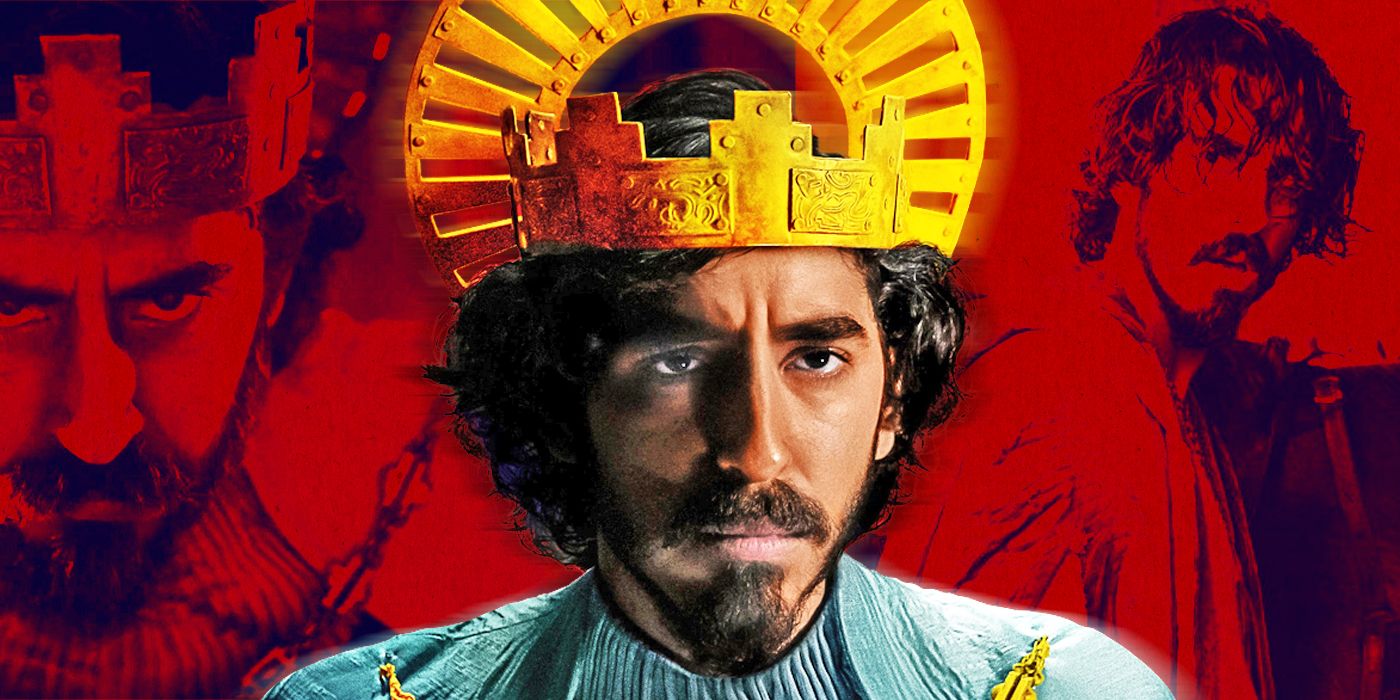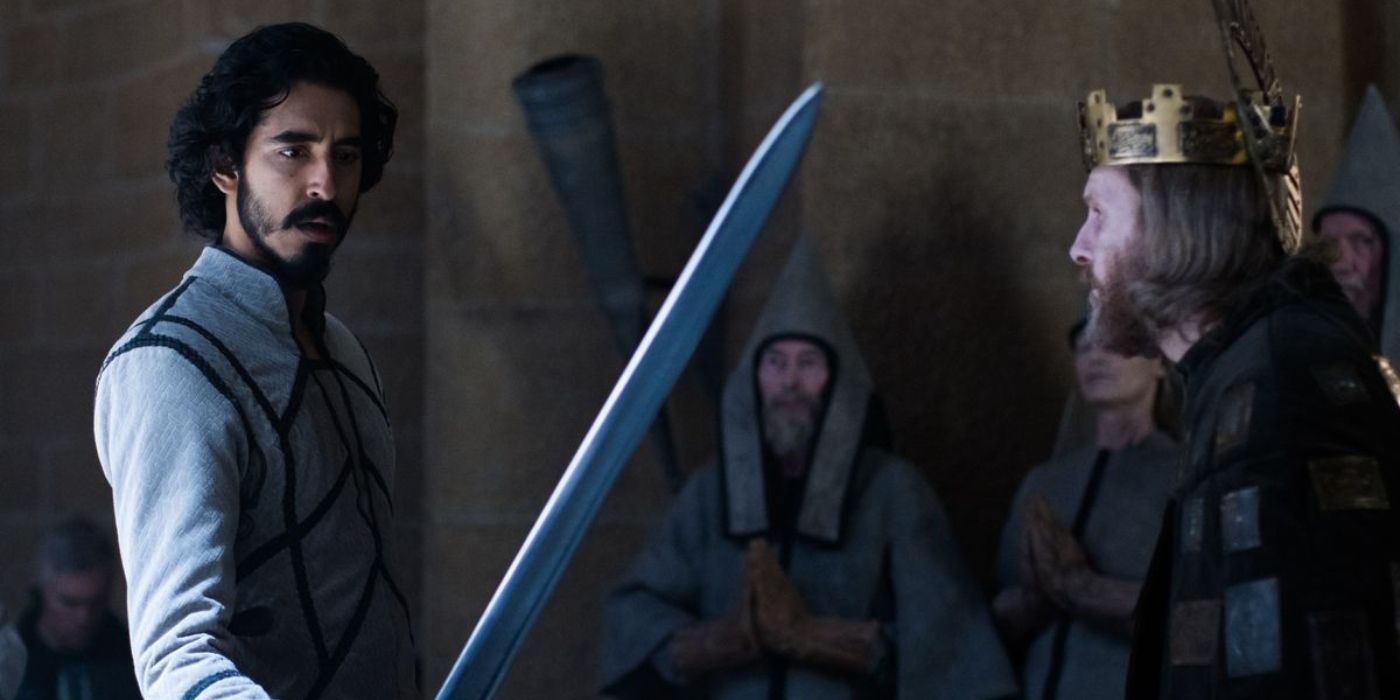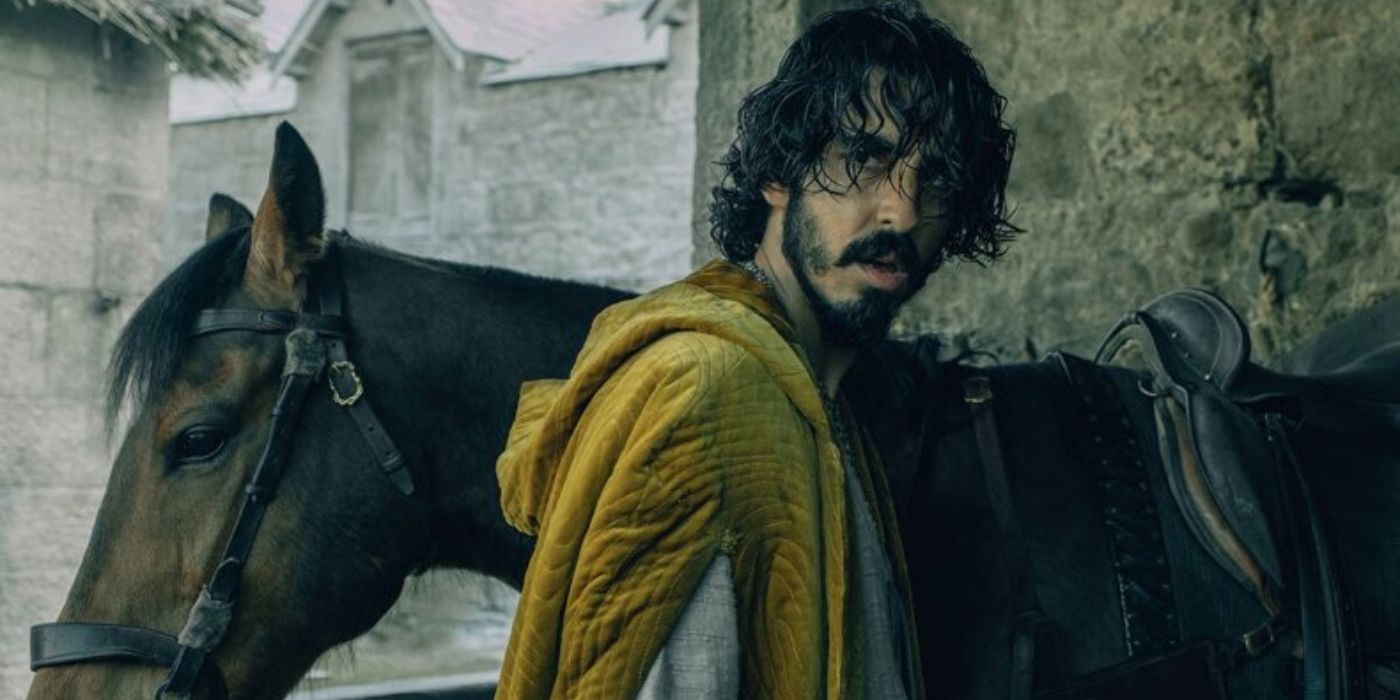
WARNING: The following contains spoilers for The Green Knight, in theaters now.
David Lowery's The Green Knight takes a clever approach in adapting the Middle English chivalric romance written by an unknown author from late 14th-century called Sir Gawain and the Green Knight. The main adjustment made by the film is that it shifts Gawain from a legendary knight to a man with complexities still trying to prove himself. In adjusting the approach to the protagonist, the film explores the difference between man and legend.
Right off the bat, The Green Knight lets the audience know that they will be watching an adaptation by literally putting those words across the screen as part of its opening sequence. The film doesn't try to tell the exact story of the original legend, instead it tries to adapt the tale to not only a new medium through the big screen, but also to a modern audience. In doing so, the film makes some changes from the original text to better explore the man behind the legend.

The very first and probably the most significant change The Green Knight makes to the characterization of Sir Gawain is that he isn't a knight when he starts the tale and is simply Gawain, the King's nephew. He tells his lover, Essel, that one day he will be a knight, and it certainly seems to be the expectation for the young man, but he also spends his free time in brothels and drinking in pubs. On Christmas prior to the arrival of the titular Green Knight, he is called to sit next to his uncle, King Arthur, and share a tale of his exploits to give the king a sense of who he is.
At this point, Gawain is unable to regale such a king as Arthur because he has nothing worthy to share, and he shamefully admits this truth. Queen Guinevere points out that he doesn't have a tale yet, implying that there is still time for him to find himself through a journey. This leads into the arrival of the Green Knight. The juxtaposition of the Knight's arrival in relation to where Gawain finds himself is significant to note because it slightly changes how the call to action functions in this version of the story in comparison to that of the original Sir Gawain.
In the poem, Sir Gawain accepts the Green Knight's challenge in place of King Arthur as a manner of chivalry and duty, whereas Gawain in the film accepts the challenge when no one else will because he is eager to prove himself. This version of Gawain is naïve and eager to prove himself with no real regard for the consequences of his actions.

Gawain accepts the Green Knight's challenge of a Christmas game and beheads the stranger, who survives the encounter and rides off with his own head to prepare to meet Gawain at his Green Chapel the following Christmas. This means that when the snow starts to fall again in Camelot, Gawain must embark on his first quest. The original poem romanticizes the literal journey of the quest, but the film does not. Instead, it takes the time to show the harsher reality of such a quest, including hardships of the natural and magical variety.
Gawain is tested mentally, physically and morally throughout his quest in often grueling ways. He is captured by bandits and his supplies stolen before he can make his escape on foot. He nearly starves, and grows cold in the wilds of nature that he had been unfamiliar with prior to this adventure. He himself had romanticized the idea of a quest and longed, in some part, for the opportunity to prove himself. However, now that he's taken the opportunity, he has to learn the hard truth that the physical act of a quest is much more grueling than the mere idea of one. Gawain's trials help explore who he is as a man, and not necessarily what makes him a legendary hero, which is a deliberate choice of the film to focus on humanizing a legend instead of romanticizing a story.

The Green Knight does something very interesting in its final act, in that it deviates greatly from the original text. First, in the film Gawain arrives early to their appointment, having fled from the Lord and Lady's house, and the Green Knight makes him wait until Christmas. Then while waiting for his blow, Gawain sees a future where he flees from his return blow and returns home a coward. This is a dark reality of the life that Gawain, now finally Sir Gawain and then King Gawain, will live after cheating out a victory. After Gawain realizes what his future will hold if he flees a coward, he finds the courage and conviction to see through his blow and admit that he is ready for the axe. The Green Knight praises him prior to saying, "Now off with your head," and the screen cuts to black.
The ending of the original text is much different. Sir Gawain does flinch when the Green Knight prepares to deliver his blow and is chastised for it. He manages to hold strong for the second blow, but the Knight does not make contact, saying he was only testing Sir Gawain's nerve. When the Green Knight does deliver his return blow, he simply nicks Sir Gawain's neck and sends him on his way.
The two different endings really drive home the idea that The Green Knight is more interested in exploring the man behind the legend rather than strictly retelling the legend. Sir Gawain survives because the type of fantasy story in which he exists has different rules than reality. He can survive a beheading game because it's a lesson in growing from failure and the value of honesty and virtue. In the film, however, Gawain must face the consequences of his actions because that is a different kind of lesson based more in reality than fantasy. Despite the fantasy elements, there is a realism in Gawain's struggle and journey. He does become a better, more righteous man by the end of the film, but a legendary knight of King Arthur's court he does not. That is because the film has shifted its focus from remarking upon a legend to finding the man within the legend and exploring his character.
To meet the man behind the legend, see The Green Knight now in theaters.
0 Comments